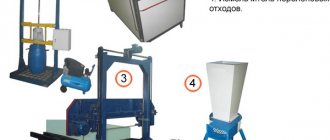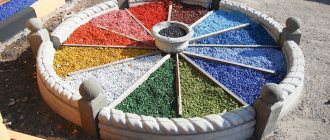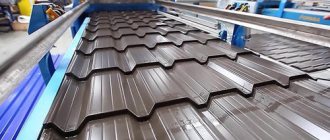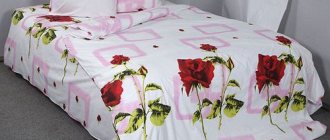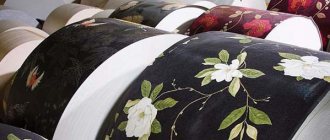The topic of the funeral business is scary and strange for many people. However, it is worth keeping in mind that this activity is one of the most profitable. People are born and, having gone through their life's journey, die. That is why funeral services will be in demand at all times. They are not affected by economic shocks, inflation, or any other factors.
Marketing research
Unlike an organization that provides funeral services, a company that produces monuments may not be involved in burials. The list of her work will only include the manufacture of tombstones and their installation.
Before organizing a business in monuments, you need to research the market in your region and determine the demand for this service. It is worth remembering that this type of product is very specific. The presence of great competition in the form of a couple of large manufacturers dooms an entrepreneur who has just decided to enter this market to failure.
Relevance and advantages of the business of manufacturing grave monuments
People are born and die every day. Relatives of the deceased have a natural desire to provide them with a bright memory. Relatives show their respect in two ways - by organizing a decent funeral and installing a monument on the grave. This means that the idea of opening a business for the production of tombstones is relevant and will remain so in the near future.
Funeral agencies that organize funerals do not produce tombstones, but only sell them. That is, they are intermediaries between the manufacturer and the buyer of the product. By organizing a company for the production of monuments, an entrepreneur will receive a much larger profit than the owners of funeral agencies.
Advantages of a business idea:
- minimum investment volume;
- there are opportunities for growth in this niche;
- quick payback of the project.
Organization of order collection points
In order for a client to contact you, you need to rent a room. This will be your point for receiving orders for the production of monuments. When choosing a room, give preference to one that is located in a busy place. Additionally, you can accept orders at any existing cemetery, where it is advisable to open a pavilion for storing finished products.
The points must be equipped with all necessary equipment. For normal work you will need not only office furniture, but also office equipment, a computer, documentation (work orders and receipts). At the reception points, the client should have the opportunity to familiarize himself with catalogs containing photographs of all manufactured types of monuments.
Why did I come up with the idea of producing ritual accessories?
My name is Andrey, I'm 38 years old, I'm from Astrakhan. I will tell you about how I was able to earn 350 thousand rubles. in the production of ritual monuments made of decorative concrete from March to October 2020. I will tell you using the example of the first season, when I tried to do this, taking into account all the nuances and mistakes. At the moment, the business is operating, I have expanded it in different directions and earn from 70 (winter) to 280 (summer) thousand rubles per month net.
You can easily use this information as the basis for your future business plan if you decide to implement my business idea. You will find out how much money I needed to start a business producing monuments and what marketing moves I used to enter the funeral services market. You will also receive a list of all the necessary equipment for this very simple production.
Plastic form for a future monument.
The idea of starting some kind of business was prompted by... a simple lack of money. The idea of producing monuments arose precisely because this type of ritual accessories is always in demand and brings good profits at a fairly low production cost. This is relatively quick money with a small investment.
Equipment
The production of monuments is carried out only after the purchase of certain equipment and forms. The main necessary element of the technological process is a vibrating table. Its main purpose is to compact the mixtures being produced.
The production of concrete monuments is based on simple technology. First of all, the shape for the future workpiece is selected. Liquid concrete is poured into it. The vibrating table, on which the form for the monument is pre-fixed, produces oscillatory movements. The result of this process is cracking and compaction of the concrete mixture. This technology makes the monument durable and more resistant to atmospheric conditions.
The vibrating table is the main production unit, which cannot be replaced by manual processing of the material. All other equipment is intended only for mechanization of labor processes. At the same time, it optimizes the number of employees.
Equipment for making monuments must include a vibrating sieve. This element is next on the list of the most significant aggregates. The sieve is designed for sifting dry cement. As a result of this process, lumps and foreign impurities are removed, which significantly reduce the quality of the product and its appearance.
If the cement is poorly sifted, during the concreting process the product may crack or become brittle, which will increase the surface's susceptibility to erosion.
The vibrating sieve can be replaced by manual sifting. However, it is worth remembering that the unit will significantly speed up the process of cleaning the material and will allow you to eliminate one employee from the staff.
Equipment for the production of monuments includes a concrete mixer. This machine is familiar to everyone who has at least once encountered construction work.
The production of monuments begins with the preparation of the concrete mixture. This is an important technological stage in the product manufacturing process. Manual mixing cannot provide the consistency of the concrete mixture that is necessary to produce a quality product.
The last component of the workshop equipment for making monuments are the molds. They are special matrices for pouring concrete. There can be many forms, because the client needs to be offered various configurations and designs of tombstone elements.
It is advisable to place lifting devices in the workshop. They can be a hydraulic trolley, hoist, etc.
Vibrating sieve
It is used for sifting cement and removing extraneous fractions larger than cement, which significantly reduce the quality of manufactured monuments not only in appearance, but also in strength characteristics. During concreting, poorly sifted cement may crack due to slag, which can subsequently lead to rapid erosion.
Replacing a vibrating sieve with manual sifting is unprofitable due to the fact that with the help of a unit this process will be performed much more accurately, with better quality and faster. In addition, the purchase of a vibrating sieve will very quickly pay for itself, reducing the cost of maintaining workers who will only be involved in this process.
DIY equipment
How to make a vibration table yourself? First of all, you need an electric motor. A unit operating on a voltage of two hundred and twenty volts is sufficient. This electric motor must have sufficient power to fulfill its intended role as a vibrator.
The second most important detail is a perfectly smooth sheet of metal. Its surface must be without the slightest flaw, otherwise the movement of the forms on the table will not vibrate, but jump. In this case, the solution will not be able to be distributed evenly. Some try to fit a sheet of plywood under the surface of the vibrating table. However, this material, due to its lightness, is not able to transmit vibrating movements to the form.
When making a table it is impossible to do without springs. These parts must be made of metal, have sufficient strength and the required diameter.
After making the frame from pipes and channels, prepared springs are placed in its corners. A metal sheet is attached to the top, to the bottom of which an electric motor is screwed.
Manufacturing technologies
Made from concrete
What does the process look like?
The concrete mixture consists of one part cement and three parts filler (for example, sand). To improve quality, various plasticizers are added (for example, “Plasticizer C3” or “Superplast RT”).
It is possible to produce tombstones and monuments in grey, white, brown, black or burgundy if iron oxide pigments are added to the mixture. There are technologies that allow you to combine several colors and produce complexly colored elements (fences, flower beds).
From natural and artificial stone
If monuments are made of stone, then it should be taken into account that marble is more malleable in processing than granite. It is best to purchase ready-made monument blanks (polished), especially if you do not have the funds to purchase machines. In this case, you only need to engrave the inscriptions and the portrait. If the portrait is made on a separate board, you need to make holes for attaching it.
When producing monuments from marble chips, the solution consists of 5 parts marble, 3 parts cement and water. All components are placed in a concrete mixer and mixed for about 5 minutes. The finished solution is placed in a mold and placed on a vibrating table for 5-7 minutes, then dried at a temperature of 16-20°C for up to 48 hours. After drying, the finished product should rest for two days. Then you can do engraving or other type of processing.
Sometimes it is not enough to make a monument; the customer wants it to be installed. To carry out this work, pipes (diameter 4-5 cm), a level, cement mortar, a shovel, a hammer, and wood beams are required. The pipes are installed first and filled with mortar. Pins are inserted into the cabinet (on the same solution), and wooden beams are placed next to them. A stele is placed on the bars, pins are inserted into it, gradually removing the bars. The position of the stele is checked with a level.
Metal monuments
Tombstone elements can be made not only from concrete. The production of monuments from galvanized steel and metal is very cheap and unpretentious in terms of investment of material and labor costs. However, it is worth keeping in mind that the production of these products should not serve as the only and main source of income due to its unprofitability. As a rule, metal monuments are produced as a by-product of an enterprise whose main activity is professional welding.
Organizational matters
Since in most cases the entrepreneur will cooperate with individuals, the registration form is suitable. However, if in the future you plan to enter into large companies or government agencies (for example, the production of city monuments, memorials or other structures made of natural stone), you should immediately choose an LLC that will allow you to carry out operations with VAT. The form of taxation is UTII.
The OKVED code is selected depending on the specifics of production:
- 26.70.2 – processing of stone for monuments;
- 26.66 – production of products from concrete, gypsum, cement.
Having decided on these points, you can begin searching for premises, suppliers of materials, purchasing equipment, and developing optimal production technology.
An important nuance: in order for the products to comply not only with the customer’s ideas about aesthetics, but also with state standards, it is necessary to familiarize yourself with the rules for installing monuments.
Tombstone elements made of facing rocks
The materials for such products are slabs of marble and granite. During the production process, they must undergo processing in the form of grinding. To do this, you will need to purchase special machines equipped with diamond discs. Granite or marble is processed at least six times.
In this case, discs of varying degrees of roughness are used. First, rough surface treatment is carried out, and then the transition to finer grinding is carried out. As a result, the stone becomes matte and smooth.
At the next stage, the natural material is polished to perfect smoothness. Disc machines are also used to carry out this process. A special paste or powder is applied to the stone. After this, it is polished with discs covered with leather, cloth or felt. The result is a shiny, glossy surface.
Production of granite monuments
Necessary equipment
To organize the production of memorial monuments from granite, you will need to purchase professional equipment.
- Laser or matrix engraving machine (200-650 thousand rubles).
- Polishing machine (from 250 thousand rubles).
- Manual grinding machine (from 2 thousand rubles).
- Attachments for a grinding machine (from 250 rubles per unit).
- Diamond needles for an engraving machine (from 200 rubles per unit).
When choosing an engraving machine, you should pay attention to the size of the working area - the larger it is, the larger-scale images can be obtained at the output.
Design materials (fonts, drawings) can be ordered on the websites of specialized companies. Or, a full-time designer can do the development themselves.
Process description + Video
The production of granite monuments is an expensive and painstaking process that requires specialized equipment and high-quality raw materials. By the way, the appearance of the monument and the durability of the product depend 80% on the characteristics of the latter.
Among those mined in the Russian Federation, Karelian granite is considered to be of the highest quality. This stone has a wide range of colors (black, red, gray), is resistant to splitting and is waterproof. Next in the ranking is granite from the Leningrad region, as well as regional deposits. If there is a quarry near your locality, it is advisable to purchase local granite.
The cheapest to produce and least durable is the stone supplied from China. Its porous structure is destroyed quite quickly, however, due to its low cost, monuments made from it are popular among the population. It is also possible to arrange supplies of material from Ukraine. The country has many deposits of high-quality and (what is important) relatively inexpensive stone. It should be taken into account that due to complex relations between states, certain difficulties may arise. However, local suppliers have already established algorithms for resolving such issues.
Having decided on the material for the monuments, it is necessary to optimize the technology. Schematically, the production process looks like this:
- Completing an application . The customer determines the shape, size and material of the monument, drawings and inscriptions, talks about the desired configuration (the standard kit includes a mounting plate, a cabinet, the stele itself and 3 bars for decorating a flower bed), and also provides a photograph of the deceased.
- Design development . The specialist processes the photograph and creates a mock-up of the product, placing all the necessary information and images.
- Preparing the stone base . A stone carver shapes the product, polishes it, and chamfers it.
- Engraving . Using a laser or matrix printer, an image is applied to the surface of the monument.
- Finishing . The surface of the monument is checked for scratches and chips and, if necessary, re-polished.
- Installation of a monument . The product is delivered to the site and installed according to the selected configuration.
If an entrepreneur manages to find a highly qualified artist who knows the technique of cutting stone, the range of services can be expanded. Compared to automatic engraving, handmade work looks much more presentable.
Processing video:
Decoration
The last step in the process of making a monument is applying images to it. The artistic design of granite products is a carving of a portrait, surname, first name, patronymic, dates of life, etc. It is performed directly on granite.
Currently, the decoration of monuments is carried out using a computer. So, the photo is initially processed. After this, a font is selected that must match the design of the monument.
Computer graphics allow you to get more expressive and clear portraits, as well as inscriptions that will be preserved for a long time. The process of decorating a monument consists of transferring a portrait of a person from a photograph onto a tombstone. It is worth keeping in mind that it differs from hand-punching in higher quality and accuracy.
Risks and payback of business
The idea of creating a production workshop where the memory of people who once lived will be stored on slabs is promising and quickly pays off. The catch is that the existing number of competitors is simply overwhelming. Sometimes the only plant already existing in a city is able to fully satisfy local demand. First of all, find out all the information on this matter.
It may turn out that competitors only work with one type of stone or do not produce forged openwork fences, then you will focus on these areas and will definitely achieve popularity. The cost of one engraving, be it an inscription, drawing or photo, ranges from 20 to 500 rubles.
The price of the finished work varies from 200 to 6,000 rubles, and the work takes no more than an hour (if it is not handmade). The preparation of one standard monument is about 4 thousand rubles, and its price after processing (without engraving) is 7-8 thousand rubles. The payback period is completely in your hands - organize the process correctly, think through individual advertising.
